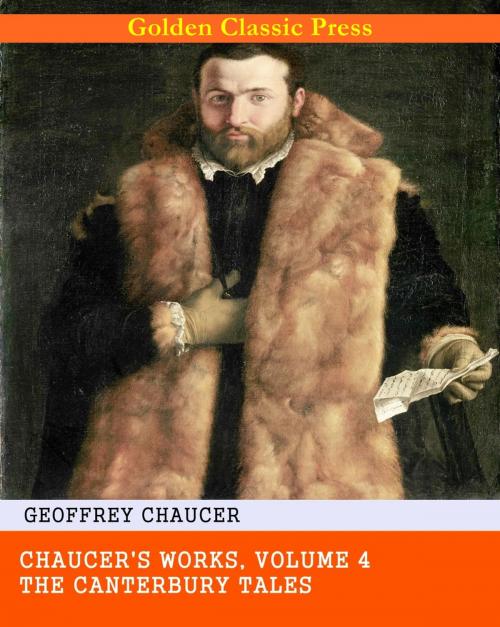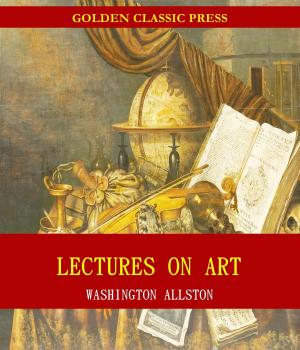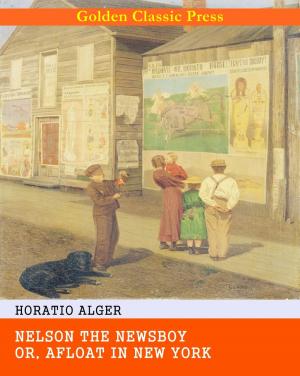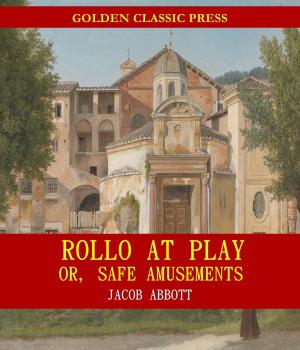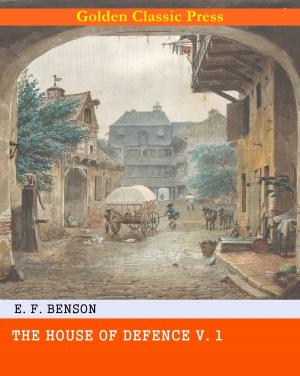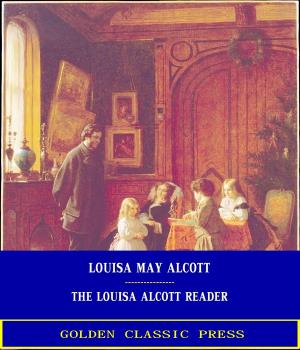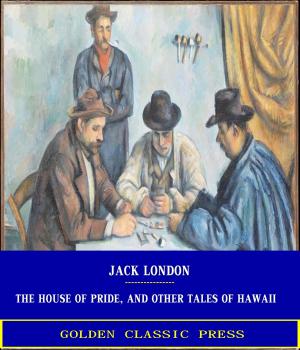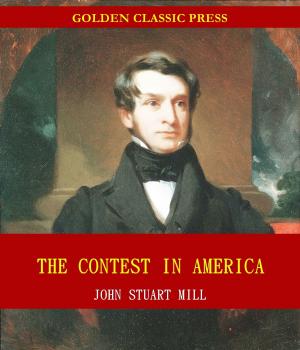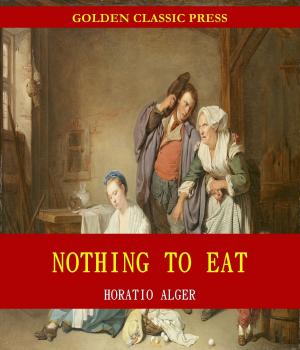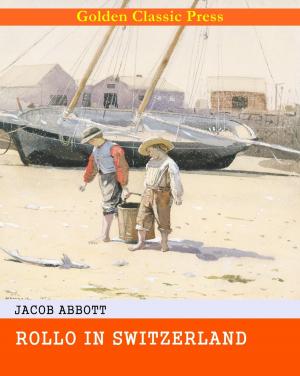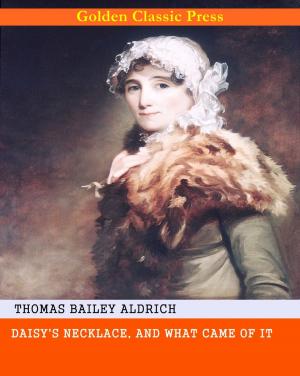| Author: | Geoffrey Chaucer | ISBN: | 1230002939056 |
| Publisher: | GOLDEN CLASSIC PRESS | Publication: | November 28, 2018 |
| Imprint: | Language: | English |
| Author: | Geoffrey Chaucer |
| ISBN: | 1230002939056 |
| Publisher: | GOLDEN CLASSIC PRESS |
| Publication: | November 28, 2018 |
| Imprint: | |
| Language: | English |
*** Original and Unabridged Content. Made available by GOLDEN CLASSIC PRESS***
Synopsis:
Poet, was born in London, the son of John Chaucer, a vintner of Thames Street, who had also a small estate at Ipswich, and was occasionally employed on service for the King (Edward III.), which doubtless was the means of his son’s introduction to the Court. The acquaintance which Chaucer displays with all branches of the learning of his time shows that he must have received an ample education; but there is no evidence that he was at either of the University. In 1357 he appears as a page to the Lady Elizabeth, wife of Lionel Duke of Clarence, and in 1359 he first saw military service in France, when he was made a prisoner. He was, however, ransomed in 1360. About 1366 he was married to Philippa, daughter of Sir Payne Roet, one of the ladies of the Duchess of Lancaster, whose sister Katharine, widow of Sir Hugh Swynford, became the third wife of John of Gaunt. Previous to this he had apparently been deeply in love with another lady, whose rank probably placed her beyond his reach; his disappointment finding expression in his Compleynt to Pité. In 1367 he was one of the valets of the King’s Chamber, a post always held by gentlemen, and received a pension of 20 marks, and he was soon afterwards one of the King’s esquires. In 1369 Blanche, the wife of John of Gaunt, died, which gave occasion for a poem by Chaucer in honour of her memory, The Dethe of Blaunche the Duchesse. In the same year he again bore arms in France, and during the next ten years he was frequently employed on diplomatic missions. In 1370 he was sent to Genoa to arrange a commercial treaty, on which occasion he may have met Petrarch, and was rewarded by a grant in 1374 of a pitcher of wine daily. In the same year he got from the corporation of London a lease for life of a house at Aldgate, on condition of keeping it in repair; and soon after he was appointed Comptroller of the Customs and Subsidy of Wool, Skins, and Leather in the port of London; he also received from the Duke of Lancaster a pension of £10. In 1375 he obtained the guardianship of a rich ward, which he held for three years, and the next year he was employed on a secret service. In 1377 he was sent on a mission to Flanders to treat of peace with the French King. After the accession of Richard II. in that year, he was sent to France to treat for the marriage of the King with the French Princess Mary, and thereafter to Lombardy, on which occasion he appointed John Gower (q.v.) to act for him in his absence in any legal proceedings which might arise. In 1382 he became Comptroller of the Petty Customs of the port of London, and in 1385 was allowed to appoint a deputy, which, enabled him to devote more time to writing. He had in 1373 begun his Canterbury Tales, on which he was occupied at intervals for the rest of his life. In 1386 Chaucer was elected Knight of the Shire for Kent, a county with which he appears to have had some connection, and where he may have had property. His fortunes now suffered some eclipse. His patron, John of Gaunt, was abroad, and the government was presided over by his brother Gloucester, who was at feud with him. Owing probably to this cause, Chaucer was in December, 1386, dismissed from his employments, leaving him with no income beyond his pensions, on which he was obliged to raise money. His wife also died at the same time. In 1389, however, Richard took the government into his own hands, and prosperity returned to Chaucer, whose friends were now in power, and he was appointed Clerk of the King’s works. This office, however, he held for two years only, and again fell into poverty, from which he was rescued in 1394 by a pension from the King of £20. On the accession of Henry IV. [1399] an additional pension of 40 marks was given him. In the same year he took a lease of a house at Westminster, where he probably died, October 25, 1400. He is buried in Poets’ Corner, Westminster Abbey, where a monument to him was erected by Nicholas Brigham, a minor poet of the 16th century. According to some authorities he left two sons, Thomas, who became a man of wealth and importance, and Lewis, who died young, the little ten-year-old boy to whom he addressed the treatise on the Astrolabe. Others see no evidence that Thomas was any relation of the poet. An Elizabeth Chaucer, placed in the Abbey of Barking by John of Gaunt, was probably his daughter.
In person Chaucer was inclined to corpulence, “no poppet to embrace,” of fair complexion with “a beard the colour of ripe wheat,” an “elvish” expression, and an eye downcast and meditative.
Of the works ascribed to Chaucer several are, for various reasons, of greater or less strength, considered doubtful. These include The Romaunt of the Rose, Chaucer’s Dream, and The Flower and the Leaf. After his return from Italy about 1380 he entered upon his period of greatest productiveness: Troilus and Criseyde [1382?], The Parlement of Foules [1382?], The House of Fame [1384?], and The Legende of Goode Women [1385], belong to this time. The first of them still remains one of the finest poems of its kind in the language. But the glory of Chaucer is, of course, the Canterbury Tales, a work which places him in the front rank of the narrative poets of the world. It contains about 18,000 lines of verse, besides some passages in prose, and was left incomplete. In it his power of story-telling, his humour, sometimes broad, sometimes sly, his vivid picture-drawing, his tenderness, and lightness of touch, reach their highest development. He is our first artist in poetry, and with him begins modern English literature. His character — genial, sympathetic, and pleasure-loving, yet honest, diligent, and studious — is reflected in his writings.
*** Original and Unabridged Content. Made available by GOLDEN CLASSIC PRESS***
Synopsis:
Poet, was born in London, the son of John Chaucer, a vintner of Thames Street, who had also a small estate at Ipswich, and was occasionally employed on service for the King (Edward III.), which doubtless was the means of his son’s introduction to the Court. The acquaintance which Chaucer displays with all branches of the learning of his time shows that he must have received an ample education; but there is no evidence that he was at either of the University. In 1357 he appears as a page to the Lady Elizabeth, wife of Lionel Duke of Clarence, and in 1359 he first saw military service in France, when he was made a prisoner. He was, however, ransomed in 1360. About 1366 he was married to Philippa, daughter of Sir Payne Roet, one of the ladies of the Duchess of Lancaster, whose sister Katharine, widow of Sir Hugh Swynford, became the third wife of John of Gaunt. Previous to this he had apparently been deeply in love with another lady, whose rank probably placed her beyond his reach; his disappointment finding expression in his Compleynt to Pité. In 1367 he was one of the valets of the King’s Chamber, a post always held by gentlemen, and received a pension of 20 marks, and he was soon afterwards one of the King’s esquires. In 1369 Blanche, the wife of John of Gaunt, died, which gave occasion for a poem by Chaucer in honour of her memory, The Dethe of Blaunche the Duchesse. In the same year he again bore arms in France, and during the next ten years he was frequently employed on diplomatic missions. In 1370 he was sent to Genoa to arrange a commercial treaty, on which occasion he may have met Petrarch, and was rewarded by a grant in 1374 of a pitcher of wine daily. In the same year he got from the corporation of London a lease for life of a house at Aldgate, on condition of keeping it in repair; and soon after he was appointed Comptroller of the Customs and Subsidy of Wool, Skins, and Leather in the port of London; he also received from the Duke of Lancaster a pension of £10. In 1375 he obtained the guardianship of a rich ward, which he held for three years, and the next year he was employed on a secret service. In 1377 he was sent on a mission to Flanders to treat of peace with the French King. After the accession of Richard II. in that year, he was sent to France to treat for the marriage of the King with the French Princess Mary, and thereafter to Lombardy, on which occasion he appointed John Gower (q.v.) to act for him in his absence in any legal proceedings which might arise. In 1382 he became Comptroller of the Petty Customs of the port of London, and in 1385 was allowed to appoint a deputy, which, enabled him to devote more time to writing. He had in 1373 begun his Canterbury Tales, on which he was occupied at intervals for the rest of his life. In 1386 Chaucer was elected Knight of the Shire for Kent, a county with which he appears to have had some connection, and where he may have had property. His fortunes now suffered some eclipse. His patron, John of Gaunt, was abroad, and the government was presided over by his brother Gloucester, who was at feud with him. Owing probably to this cause, Chaucer was in December, 1386, dismissed from his employments, leaving him with no income beyond his pensions, on which he was obliged to raise money. His wife also died at the same time. In 1389, however, Richard took the government into his own hands, and prosperity returned to Chaucer, whose friends were now in power, and he was appointed Clerk of the King’s works. This office, however, he held for two years only, and again fell into poverty, from which he was rescued in 1394 by a pension from the King of £20. On the accession of Henry IV. [1399] an additional pension of 40 marks was given him. In the same year he took a lease of a house at Westminster, where he probably died, October 25, 1400. He is buried in Poets’ Corner, Westminster Abbey, where a monument to him was erected by Nicholas Brigham, a minor poet of the 16th century. According to some authorities he left two sons, Thomas, who became a man of wealth and importance, and Lewis, who died young, the little ten-year-old boy to whom he addressed the treatise on the Astrolabe. Others see no evidence that Thomas was any relation of the poet. An Elizabeth Chaucer, placed in the Abbey of Barking by John of Gaunt, was probably his daughter.
In person Chaucer was inclined to corpulence, “no poppet to embrace,” of fair complexion with “a beard the colour of ripe wheat,” an “elvish” expression, and an eye downcast and meditative.
Of the works ascribed to Chaucer several are, for various reasons, of greater or less strength, considered doubtful. These include The Romaunt of the Rose, Chaucer’s Dream, and The Flower and the Leaf. After his return from Italy about 1380 he entered upon his period of greatest productiveness: Troilus and Criseyde [1382?], The Parlement of Foules [1382?], The House of Fame [1384?], and The Legende of Goode Women [1385], belong to this time. The first of them still remains one of the finest poems of its kind in the language. But the glory of Chaucer is, of course, the Canterbury Tales, a work which places him in the front rank of the narrative poets of the world. It contains about 18,000 lines of verse, besides some passages in prose, and was left incomplete. In it his power of story-telling, his humour, sometimes broad, sometimes sly, his vivid picture-drawing, his tenderness, and lightness of touch, reach their highest development. He is our first artist in poetry, and with him begins modern English literature. His character — genial, sympathetic, and pleasure-loving, yet honest, diligent, and studious — is reflected in his writings.
